Learn How Soy Sauce Is Made At This Free Factory Tour In Niigata

Soy sauce is indispensable in Japanese cuisine, and Koshi no Murakami has been making it for over 180 years in Niigata. Learn how it's made and how much time and effort is put into making it in this factory tour.
Soy Sauce - The Essential Condiment for Sushi

Sushi is quintessential for Japanese cuisine. Most people don't eat sushi plain. They dip it in soy sauce. Soy sauce is not limited to sushi. It is used in many different ways such as in stews, for grilled fish or to make teriyaki sauce which is a soy sauce-based condiment. It is one of the most popular Japanese condiments alongside miso.
Did you ever wonder how it is made? We visited the soy sauce factory in Nagaoka City, Niigata, operated by Koshi no Murasaki. Today they will teach us how to make soy sauce!
Koshi no Murasaki - More than 180 Years of History
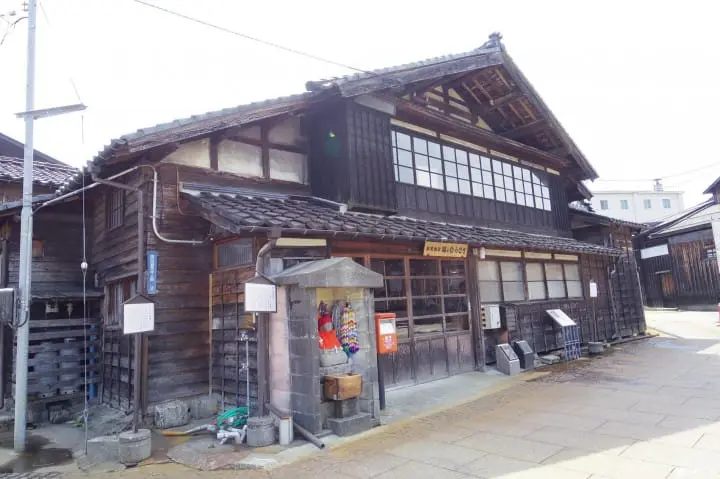
Settaya is a village in Niigata known for many years as a place specializing in fermentation. Sake and soy sauce brewing industries developed in this area as well. One of the elegant buildings, in particular, stands out. This is the building that belongs to Koshi no Murasaki, a company founded in 1831. It has existed ever since the Edo period.
If you gather a group of ten people or more, you can take a free tour of the soy sauce factory. During this tour, the staff will explain the soy sauce making process in detail.
*Check the end of the article for more details. You may not be able to see some parts of the process at certain times due to the busy season or for operational reasons.
Touring the Factory - A Consistent Process is Key
This time, someone called Kasahara-san took us on a tour of the Koshi no Murasaki factory. Let’s head inside!
1. The Preliminary Arrangements
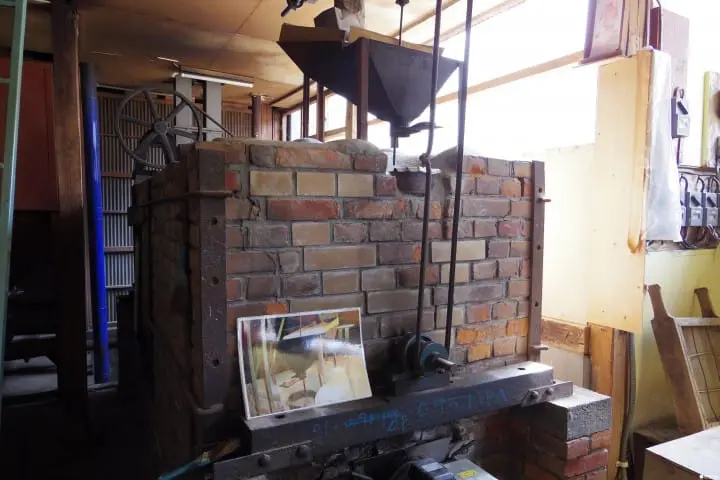
First, we were shown around a room with a big machine. This is where the raw materials are prepared.
Soybeans, which are the main ingredient in soy sauce, are steamed here at a high temperature. This changes the quality of their protein, making it easier for them to be affected by the koji mold*.
At the same time, steaming the soybeans helps to kill unwanted bacteria as well. Next, they are mixed with koji mold and roasted wheat using the machine in the photo above. The final product, called koji, is the base for making soy sauce.
*Koji mold: A mold used to ferment soybeans in order to make soy sauce and miso paste
2. The Koji Room - The Power of Enzymes
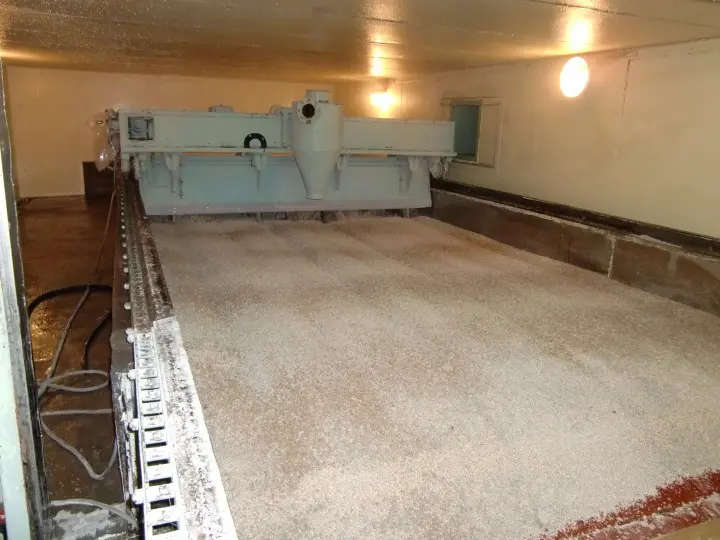
Photos courtesy of Koshino Murasaki Corp.
The finished koji is spread out evenly in the spacious koji room. Warm air is used to propagate the mold and increase the enzymes. It is said that soy the sauce's enzymes have the power to improve the bodies absorption of nutrients. They are also supposed to improve digestion.
3. The Fermentation Process
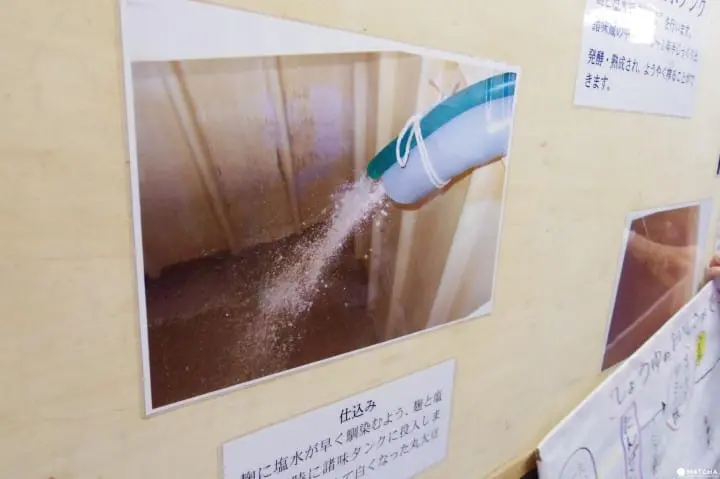
Koji is mixed with brine (a high-concentration solution of salt mixed with water) creating a product called moromi. The next step consists of the moromi fermenting and maturing. This process takes upwards of a year in which the moromi will gradually develop the color and aroma of soy sauce.
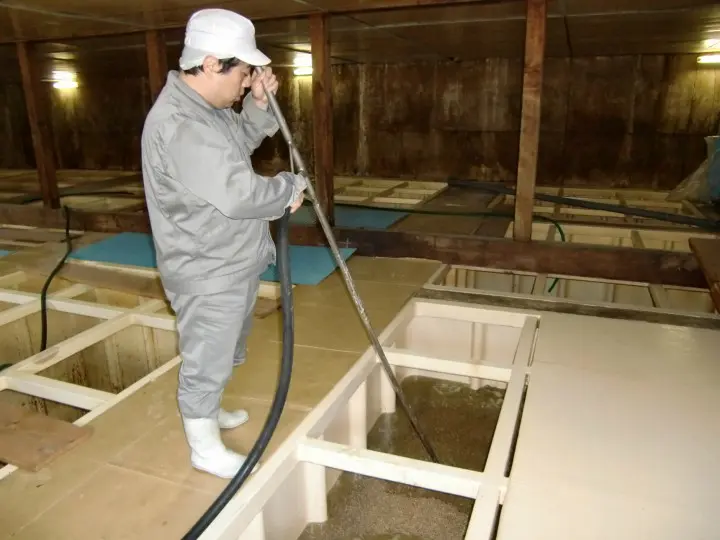
Photos courtesy of Koshino Murasaki Corp.
In order for the koji and the brine to combine, the moromi is stirred constantly during the whole fermentation process. This action is called paddling. The frequency of the paddling is decreased partway through. However, the stirring still has to be done occasionally to eliminate temperature irregularities and supply oxygen to the fermentation.
4. Pasteurization to Adjust the Aroma
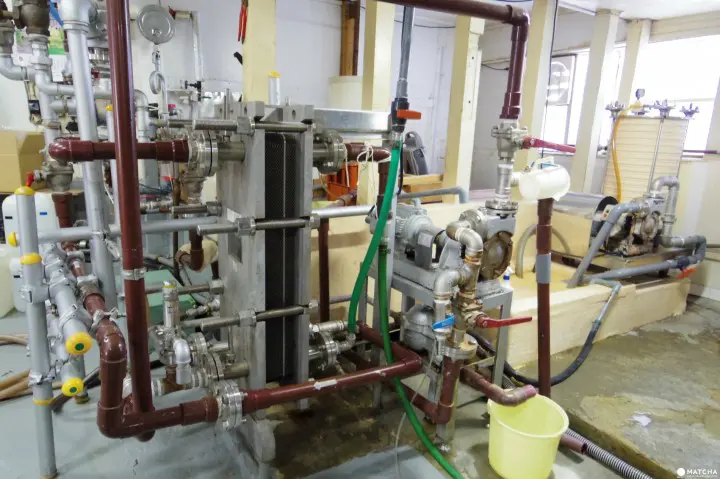
Once the moromi is completely matured, it is placed on mats made of hemp, which are then stacked. The soy sauce is extracted by pressing down on those mats with a hydraulic press. However, this is still not the final product.
A device called a plate heater (pictured) circulates the soy sauce as it is heated up to 95℃. This pasteurization process ends the fermentation. It stabilizes the sauce’s quality as well as sterilizes it. This process helps to develop the most important property of soy sauce, its unique aroma.
5. Purifying the Soy Sauce

A week or two after pasteurization, the soy sauce is placed in purification tanks and allowed to rest. During this time, some of the proteins coagulate and settle to the bottom of the tanks as a sediment. This process improves the purity of the soy sauce.
6. Bottling Every Last Drop
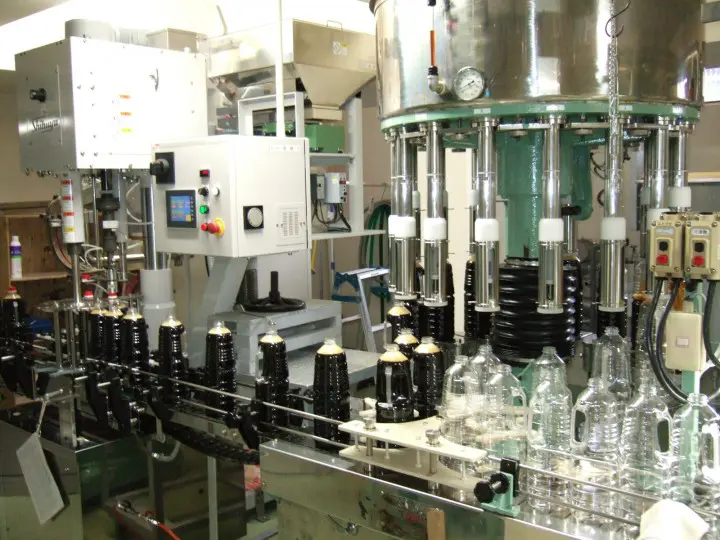
Photos courtesy of Koshino Murasaki Corp.
After the filtration, the soy sauce is ready! Once the sauce has been poured into plastic bottles, cans, and other containers, they are capped and labeled.
You can buy soy sauce at every convenience store, supermarket and many other places in Japan. However, learning that it takes over a year to prepare soy sauce in the traditional way might make you appreciate it in a whole different way.
Koshi no Murasaki Products - Perfect for Souvenirs!
How about buying some the soy sauce, which took all that time and effort to make, to take home as a souvenir.
At Koshi no Murasaki, the soy sauce produced here is sold at the entrance. Even if the soy sauce bottles may look the same, they are small differences in terms of their characteristics and how they are made.
Let’s take a look at some recommended items produced by Koshi no Murasaki.
1. Bonito Stock Koshi no Murasaki - A Staple for Cooking and Sashimi

Koshi no Murasaki, the company’s flagship product, has even become the company's name itself. Normally Japanese soy sauce does not contain dashi stock, but Koshi no Murasaki contains bonito stock. Its true flavor emerges even if you just try it by itself.
Because it uses bonito flakes, the taste is very elegant and unique. It can be used for a variety of purposes, such as being sprinkled on sashimi or used in home cooking. The newly released hermetically sealed 210ml bottle (pictured right) only costs 282 yen and is the perfect size for a souvenir. The one-liter bottle (pictured left) costs 540 yen.
2. Nijikomi Pure-Brewed Soy Sauce - Fermented Twice as Long
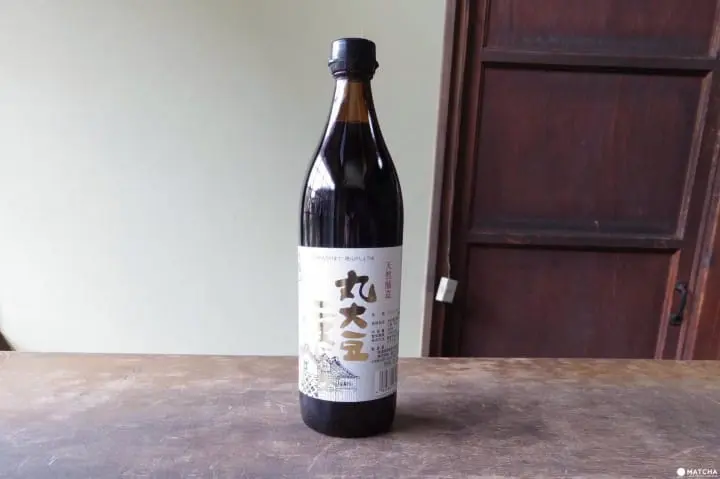
This soy sauce (900 ml, 950 yen) is made by using unprocessed soybeans from Niigata and domestic wheat. Amazingly, it is fermented twice as long as usual.
The brewers take the prepared soy sauce and substitute it for the brine in order to make the moromi. It is known as twice-prepped soy sauce. This extra-mature soy sauce has a deep color and mild depth. It is perfect for dishes that require a strong flavor such as sushi, sashimi, teriyaki and stews.
3. Koshi no Kaori Pure-Brewed Soy Sauce - Mild and Richly Scented
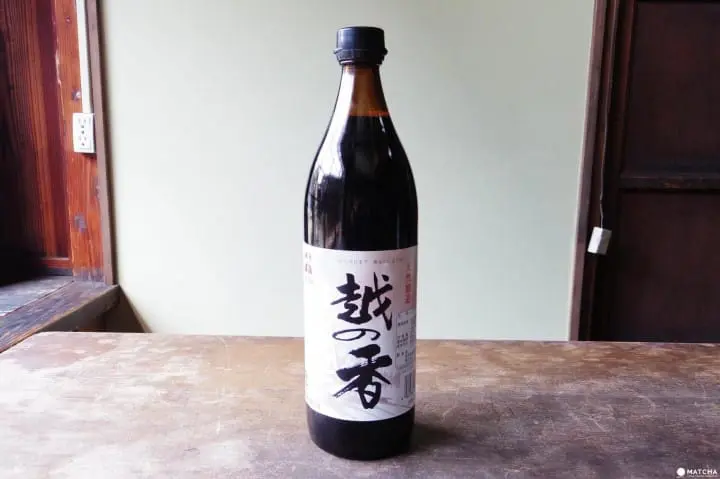
This strong soy sauce (900ml, 793 yen) also uses whole soybeans from Niigata which are carefully fermented. Strong soy sauce is the most prevalent kind used in Japan, with its dark coloring and strong taste.
The mild flavor and rich scent of this soy sauce made with whole soybeans will bring out the taste of any food. It goes especially great with sashimi or stews.
How about using any of these soy sauce varieties in your home cooking? You can stop by the factory and just buy the soy sauce without taking a tour as well.
Why Did Settaya in Nagaoka City Develop Into a Brewing Haven?
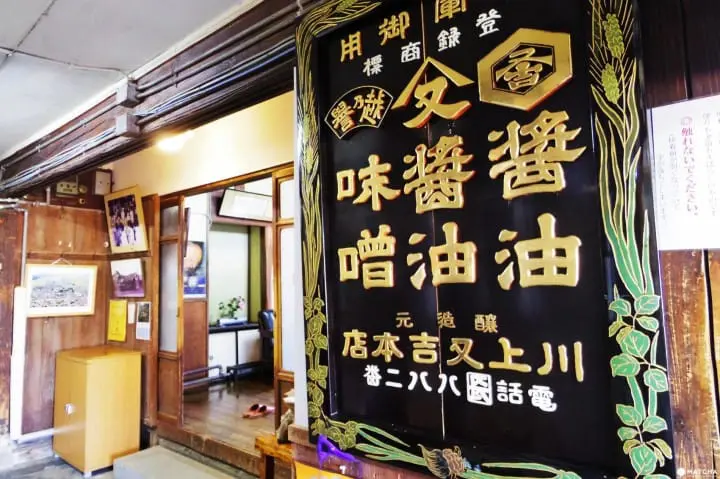
There are six brewing companies in the small area of Settaya in Nagaoka City, where Koshi no Murasaki is located. This is unusual even in Japan and you might wonder why the brewing industry has developed here, so far away from Tokyo.
In the Edo period, Settaya was under direct control of the shogunate. The area could freely produce and sell soy sauce and sake without having to negotiate with the feudal lords of Nagaoka. The tax rate was favorable, so brewers could shift their assets towards product development.
The Shinanogawa River is nearby, offering an abundant underground water supply. Since there was a highway cutting through Settaya, transporting goods was very convenient as well. This is how one of Japan’s leading places for fermentation has developed over time.
Soy sauce is definitely something you will encounter on your travels no matter where you go in Japan. However, after you explore the roots of soy sauce in Settaya, you may enjoy Japanese food even more!
Applying for the Tour
You can apply for the tour at their homepage through an inquiry form. The tour is available for at least ten people per tour and will last for one hour. It is only available in Japanese.
Be aware that you may not be able to take the tour at certain times due to the busy season or for operational reasons, so make sure to confirm beforehand.
In cooperation with Koshi no Murasaki Corp.
Read also
新潟生まれ。日本文化と古い建物が好きな社会人。日本を、地方を好きになってもらえるような記事を綴っていきたいです。














































![[2026] Top 5 Strawberry Picking Spots in Tokushima, Naruto| Farms and Access Guide for January to May](https://resources.matcha-jp.com/resize/720x2000/2025/03/06-227165.webp)

